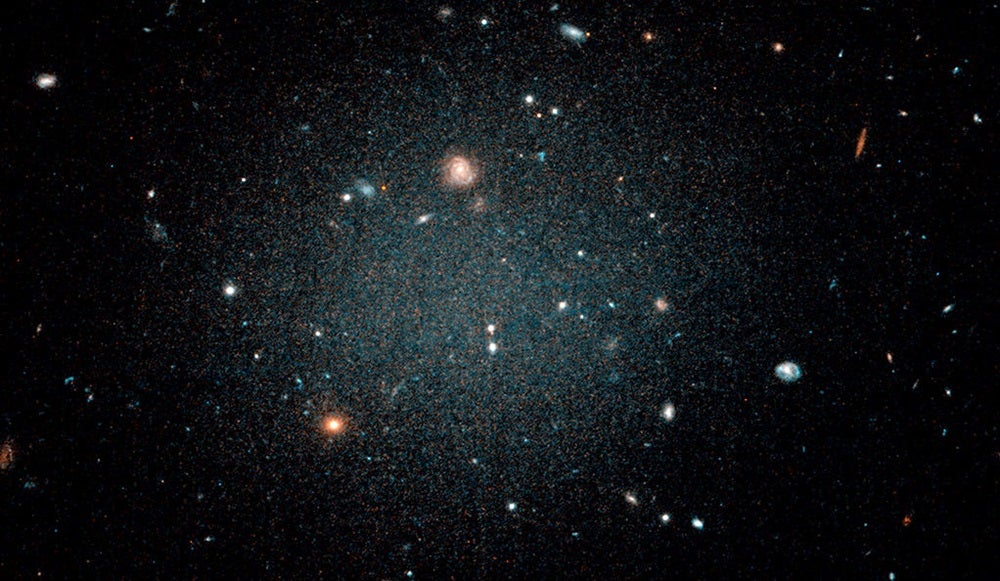
No one knows for sure. Dark matter was proposed by Swiss-American astronomer Fritz Zwicky (1898–1974) in 1933 to explain why the Coma galaxy cluster appeared to have a stronger gravitational field than expected if it were composed of matter that interacts with light.
The simplest model, constructed only to explain astronomical observations, asserted dark matter is a material that neither blocks nor emits light. Because adding a mysterious particle isn’t the most elegant solution, scientists tried to imagine ways in which ordinary matter could hide from light.
For example, some scientists suggested dark matter might be ordinary matter – a dead star, or something else that, once cool, is hard to detect. Or, perhaps, it is bound inside black holes, from which no light can escape.
The objects would have left imprints on the cosmic microwave background, or on the proportions of elements produced in fusion reactions during the universe’s first few minutes. Astronomers don’t observe either of these imprints today. Also, such “baryonic dark matter” should form structures in our galaxy’s halo we don’t see today: Massive Compact Halo Objects (MACHOs). Groups have searched for MACHOs but have not found them.
Some theories predict dark-matter particles do interact with other kinds of ordinary matter, but only weakly. These Weakly Interacting Massive Particles (WIMPs) are the alternative to MACHOs.
Experiments to detect such particles are being built. The Chicagoland Observatory for Underground Particle Physics is building a detector to look for an observable recoil from the collision of a dark-matter particle with an ordinary nucleus.
Meanwhile, when theorists construct new models of particle physics, they watch for any particle that behaves like dark matter. They look for something that interacts weakly, if at all, with ordinary forces such as electromagnetism (light), and the weak and strong nuclear forces, which are associated with nuclear reactions.
Dark matter, when it is found, will be recognizable as something stable that doesn’t decay into ordinary matter, something heavy and slow-moving enough that it doesn’t fly out of the clusters that started this debate, and something that light and the nuclear forces pass through almost unimpeded.
– Simon Dedeo, Princeton University, Princeton, New Jersey









